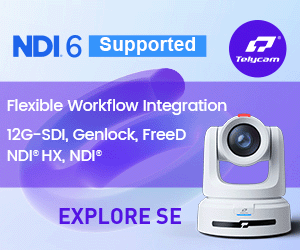The toughest things about being the Standards Vice President (SVP) is that everyone expects standards to be the most important thing. In all the systems that I’ve designed and deployed over the years, I've yet to find any production workflow that is 100% standards based. True, the core technologies may well be standards based, but the overall workflow is made up of many technology pieces from open source code, through de-facto delivery specifications based upon SMPTE or Trade Association Specifications that in turn depend on full, International Standards to work. I can already hear some folks saying "In the good old days, everything used standards", but I beg to disagree.
I was honoured to take part in the opening of the PYE Museum in Cambridge, UK as the SMPTE representative. For those of you who don’t recognise the name, PYE was one of the global tech giants of the 1930s and 1940s. Starting in a humble garden shed in 1896, William George Pye created a technology power house that grew a global organisation employing over 25,000 people in the 1960s before Silicon Valley was a thing and when the words workflow, cloud and REST had entirely different meanings.
The museum should be open by the time this editorial goes to press. At the opening there were exhibits from the company’s history including Pye-Philips cameras and transmitters. There was a BBC Outside Broadcast Van with working colour cameras from the 1970s. Many of the video and audio connections were indeed based on standards, along with the colorimetry, audio range and other key factors. However, this was the era where colour TV was innovative and working practises were evolving. Nearly all of the control systems were proprietary and the automation was performed by humans, none of whom, I’m sure, considered themselves standard.
With today's increased level of automation and efficiency, we are aiming to get more and more software and equipment to inter-operate. Some of this interoperability will require standards to build good and stable platforms upon which smart people (that's you the reader) can innovate. The standards needs to be constrained and extended to meet specific business needs. This is why Trade Associations get together and write documents. It’s why SMPTE introduced the Technical Specification to address the need for a lighter weight, easier to iterate published technical document. Now, we layer proprietary constraints and operational practice documents and then software interfaces to allow systems to reliably talk to each other.
Not every moving part in a workflow needs to be governed by a standard, but the stable, foundational platforms cannot exist without standards from SMPTE, IETF, IEEE, W3C, AES and others. As levels of automation increase and media businesses become increasingly commoditised, I think we’ll see more and more Standards, Specifications and Recommended Practises appearing to limit the risks of 100% vendor lock-in to a single cloud supplier who occasionally lets 10% of its global network vanish for short periods of time.
The next time you think workflow, just remember that Bob and Ken sitting in the BBC van shooting horse racing back in the 1970s would not have recognized the word. They would have just done their jobs and TV would appear on peoples’ screens a few milliseconds after the photons hit the lens.
More details on PYE, a UK tech company that is older than SMPTE from Pauline Howes pjh@pyehistorytrust.org and https://www.pyemuseum.org










































